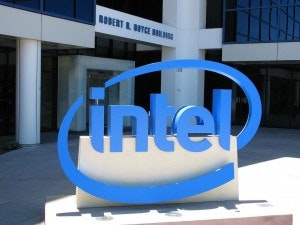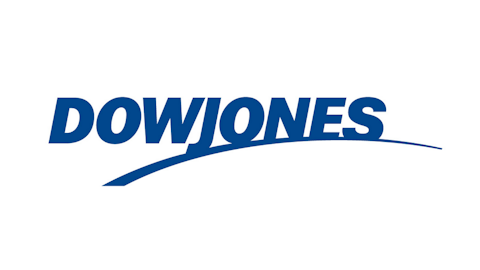There aren’t many people who will suggest that Kohl’s Corporation (NYSE:KSS) is a subversive threat to our existence as we know it. Lucky for you, dear reader, I am one of them. As our elected officials and fossil fuel lobbyists engage in never-ending battles to ensure we maintain our energy status quo, many corporations are quietly making big investments to brighten our energy future. Today I’m looking at the top 10 finishers on the Environmental Protection Agency’s Green Power Partnership list. The agency ranks 50 entities, and you can see the whole list here.
The leaders
The EPA’s rankings are based on three factors: renewable energy certificates, on-site generation, and utility green power products. The top 10 organizations on the EPA’s list are as follows:
| Rank | Company | Green Power |
|---|---|---|
| 1 | Intel (NASDAQ:INTC) | 100% |
| 2 | Microsoft (NASDAQ:MSFT) | 80% |
| 3 | Kohl’s Department Stores | 105% |
| 4 | Whole Foods | 107% |
| 5 | Wal-Mart | 4% |
| 6 | U.S. DOE | 14% |
| 7 | Staples (NASDAQ:SPLS) | 101% |
| 8 | Starbucks* | 70% |
| 9 | Lockheed Martin | 30% |
| 10 | Apple (NASDAQ:AAPL) | 85% |
Source: EPA. *Company-owned stores only.
The ranking criteria explain why a company like Wal-Mart can rank fifth, despite generating only 4% of its electricity usage from green power. The company ranks first in the nation for on-site green power generation, producing more than 174 million kilowatt hours on-site.

According to the EPA, Intel Corporation (NASDAQ:INTC)’s green power usage has the environmental equivalent of taking 455,000 cars off the road every year. The company generates on-site solar power at several facilities, but it purchases 3.1 billion kilowatt hours a year of renewable energy certificates.
Now would be an excellent time to remind ourselves what renewable energy certificates are. From the EPA:
“A REC … represents the property rights to the environmental, social, and other nonpower qualities of renewable electricity generation. A REC, and its associated attributes and benefits, can be sold separately from the underlying physical electricity associated with a renewable-based generation source.”
Essentially, when producers generate renewable energy, they create one REC for every 1,000 kilowatt-hours of electricity that hits the grid. The RECs can either be sold with the electricity, or separately. If sold separately, the electricity is no longer considered “green.”
The system allows for the tracking of renewable generation, and for customers to buy “green” electricity when there isn’t any available locally. You can read more about RECs here.
Runners-up
Microsoft has reduced its carbon emissions by at least 30% compared with its baseline 2007 emissions. The company is now committed to achieving carbon-neutrality, an ambitious goal if there ever was one, especially for a tech company.
Kohl’s Corporation (NYSE:KSS) is a bit of a teacher’s pet when it comes to the EPA. It has been listed as the Green Partner of the Year three times since 2009. The company uses on-site solar panels to generate 2% of its electricity, and purchases the rest of its green power.
Whole Foods has solar systems at 16 locations, with 20 more on the way. The company also has four locations with a fuel cell. Perhaps more importantly, Whole Foods has initiated energy efficiency upgrades to its facilities that save upwards of 20 million kilowatt hours every year. You can read about the minimum efficiency standards it uses in new construction here, and the extreme importance of energy efficiency here.
Staples is one of those big-box stores that make people nervous, but it’s making all the right moves from an energy perspective. The company has 36 on-site solar installations and has made incredibly impressive efforts to cut energy use, including a 11.3% companywide reduction in energy intensity, and a 66% reduction in carbon emissions from its 2001 baseline.
Starbucks’ company-owned stores are focused on efficiency and supporting the green power market. The company’s goal is to purchase RECs to cover 100% of its stores’ electricity use by 2015. It is currently at the 70% mark.
Lockheed Martin is quickly making its name as a player in the energy space. It’s on the EPA’s list because it’s constructing energy-efficient buildings and constructing on-site renewable projects. It’s on my list because in an effort to diversify its business mix outside of government contracts, it’s stepping up its energy innovation projects in a big way.
Apple Inc. (NASDAQ:AAPL) generates 16% of its energy use on-site. It also purchases energy via RECs and through partnerships with utilities. It is perhaps the most proactive when it comes to pushing for green energy development, pursuing projects that need Apple Inc. (NASDAQ:AAPL)’s involvement to be developed and brought to market in the first place. The company recently announced that 75% of its corporate facilities and data centers are powered by renewables.
Foolish takeaway
These companies aren’t going green to do us a favor, Fools. There are powerful business forces at work here. As investors, knowing which companies are making efforts to cut down energy costs and improve efficiency gives us a head start in our research to find innovative, forward-thinking investment opportunities. This is just the first wave; expect more and more companies to focus on greener, cleaner energy going forward.
The article 10 Companies Pioneering Green Energy Usage originally appeared on Fool.com.
Fool contributor Aimee Duffy owns shares of Starbucks. If you have the energy, follow her on Twitter where she goes by @TMFDuffy. The Motley Fool recommends Apple, Intel, Starbucks, and Whole Foods Market and owns shares of Apple, Intel, Lockheed Martin, Microsoft, Staples, Starbucks, and Whole Foods Market.
Copyright © 1995 – 2013 The Motley Fool, LLC. All rights reserved. The Motley Fool has a disclosure policy.


